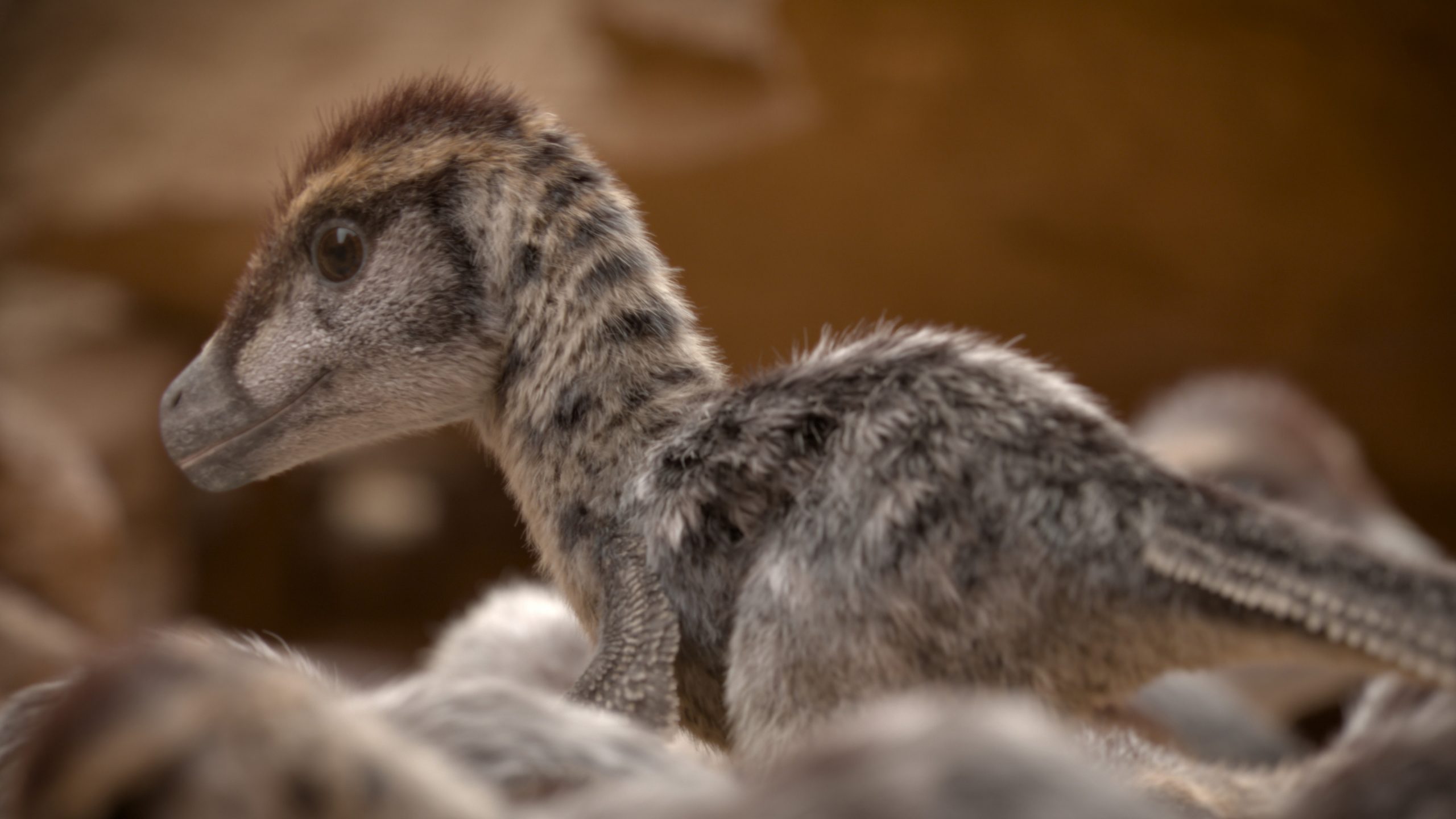AIPT continues our coverage of the docuseries Prehistoric Planet 2 with some information behind the second episode, “Badlands”!
“Badlands” begins with a herd of Isisaurus colberti marching across a volcanic wasteland. They’re trying to take advantage of the geothermal heat to help incubate their eggs. This was demonstrated in season one with the hadrosaur Olorotitan, although there’s no solid evidence for the behavior in that animal. Isisaurus is a titanosaur from India, though, and recent studies show that sauropods were taking advantage of highly volcanic areas for their eggs.
The second vignette takes audiences to the desert badlands of Asia, where a family of Velociraptor follow a massive herd of sauropods. These sauropods are represented by a yet unnamed Mongolian titanosaur and smaller nemegtosaurs. Nemegtosaurus takes its name from the Nemegt formation, one of the extensive fossil-bearing sites in Mongolia. Both of these animals were covered in season one, so if you’d like to read more about them, we’ve got a handy link for you.

Among the sauropods is the comparatively tiny Prenocephale prenes, a pachycephalosaur. Pachycephalosaurs were notably absent from season one, so it’s nice to see their inclusion here, as their fossils belong almost exclusively to the very end of the Cretaceous. With their charismatic domed skulls, they’re a fascinating group of dinosaurs, making their way into various films like The Land Before Time and The Lost World: Jurassic Park.
Pachycephalosaurs are sadly enigmatic in the fossil record, though, with the majority of the fossils found being the thick domes. Prenocephale is particularly frustrating, because a second member of the family, Homalocephale calathoceros, was located in the same environment, yet the fossil of Homalocephale was smaller and seemingly less mature. How could scientists be sure it was in fact a different animal? Fortunately, new fossils of juvenile Prenocephale were found, highlighting that while the Homalocephale fossils we have might still represent juveniles, they were almost certainly a different species.
Staying within the late Cretaceous of Asia, “Badlands” moves to the nesting sites of Corythoraptor. Despite the similarity in naming convention, these animals are not dromaeosaurs like Velociraptor, but instead belong to a group of horribly misnamed animals – the oviraptorosaurs. The name, taken after the genus Oviraptor, means “egg thief,” due to the fact that the original Oviraptor remains were found associated with eggs. But the association was incorrectly interpreted, and it turns out these “egg thieves” are incredibly diligent parents, so it’s nice to see that behavior depicted here.
Hunting the Corythoraptor is the dromaeosaur Kuru kulla. Described in 2021, Kuru is a close relative of the more famous Velociraptor. Unfortunately, the fragmentary remains of Kuru mean that we don’t know how well it could see in the dark, but studies of the scleral rings of its relatives (including Velociraptor) suggest these animals may have been nocturnal hunters.
This juxtaposition of Kuru and Corythoraptor is one of the few times that Prehistoric Planet 2 mixes animals from different environments. Corythoraptor is from the Nanxiong formation in southeastern China, while Kuru is from the Braun Goyot formation in Mongolia. While it’s not inconceivable that individual animals of each of these species could have met, the diversity of late-Cretaceous Asian oviraptorosaurs and dromaeosaurs means there were more appropriate examples to reconstruct. Given the cost and time constraints of producing a show like this, though, it’s not the worst thing that could have been done.

“Badlands” stays in the deserts of Asia to introduce viewers to Tarchia, an ankylosaur. While it might seem unlikely that these broad-hipped, seemingly slow-moving dinosaurs would find themselves in the desert, the description of a second species of Tarchia (Tarchia tumanovae) suggests that these animals evolved different feeding strategies as a desert environment eventually gave way to a more humid one, with the ankylosaurines from the desert environments having a more generalist strategy. Conversely, the ankylosaurs in the humid environments were able to be more selective.
The complexity of ankylosaur nasal passages has also been studied in both nodosaurids (no tail club) and ankylosaurids (tail club), with the findings suggesting that ankylosaurids in particular had effective heat-managing capabilities, which would have been helpful for any animal making a trek across a desert.
Finally, “Badlands” returns to the Deccan region of India, where the Isisaurus hatchlings emerge. The existence of the beak-like egg tooth shown on the hatchlings is supported by an exquisite scan of a fossilized embryonic titanosaur. Preying upon the hatchlings is the abelisaur, Rajasaurus narmadensis. A close relative of episode one’s Majungasaurus, Rajasaurus also featured a horn on the top of its head, making abelisaurs a charismatic group of carnivores.

That’s all for “Badlands.” Join us tomorrow when we look at the third episode of Prehistoric Planet 2, “Swamps”!
AIPT Science is co-presented by AIPT and the New York City Skeptics.
Join the AIPT Patreon
Want to take our relationship to the next level? Become a patron today to gain access to exclusive perks, such as:
- ❌ Remove all ads on the website
- 💬 Join our Discord community, where we chat about the latest news and releases from everything we cover on AIPT
- 📗 Access to our monthly book club
- 📦 Get a physical trade paperback shipped to you every month
- 💥 And more!














You must be logged in to post a comment.